High Iron Vegetarian Meals for Optimal Wellbeing
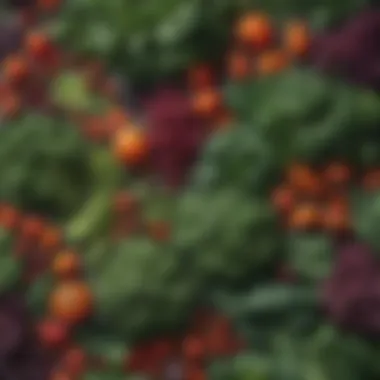
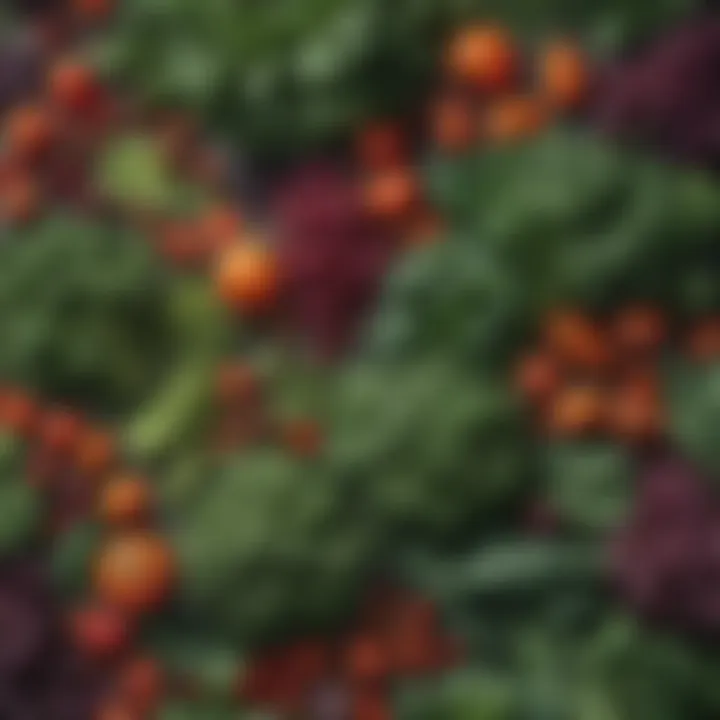
Intro
Iron is an essential nutrient that plays a critical role in numerous bodily functions, including oxygen transport, energy metabolism, and immune system support. For individuals following a vegetarian diet, obtaining sufficient iron can be challenging due to the limited sources of readily absorbed iron compared to animal products. This article seeks to illuminate the path towards high iron vegetarian meals, offering nutritional strategies tailored for those committed to plant-based eating.
Understanding the significance of iron is the first step. It helps in the formation of hemoglobin, which carries oxygen in the blood. A deficiency can lead to anemia, characterized by fatigue, weakness, and pallor. Therefore, focusing on high iron vegetarian meals is not just a dietary preference but a necessity for maintaining good health.
Furthermore, not all forms of iron are equal. Plant-based sources provide non-heme iron, which is less efficiently absorbed by the body than heme iron found in animal products. To enhance the absorption, incorporating vitamin C-rich foods is vital. Meals should not only satisfy hunger but also ensure an optimal intake of this crucial nutrient. This exploration will present an array of meal suggestions, practical tips for busy lifestyles, and strategies for maximizing iron absorption.
With this foundation, let's delve deeper into specific recipes that embrace both culinary delight and nutritional necessity.
Understanding Iron in Vegetarian Diets
Iron is a critical mineral for human health, playing a vital role in various physiological functions. However, for individuals who follow vegetarian diets, ensuring adequate iron intake can be especially challenging. This section delves into the significance of understanding iron, particularly the different forms it takes, dietary requirements, and strategies for optimizing absorption.
Role of Iron in Human Health
Iron plays multiple roles in the body. It is instrumental in the formation of hemoglobin, which carries oxygen in the blood. Low iron levels can lead to anemia, characterized by fatigue and weakness. Additionally, iron is essential for immune function and cognitive health. A well-rounded diet that meets iron needs supports overall well-being.
Types of Dietary Iron
Dietary iron exists mainly in two forms: hemoglobin iron and non-hemoglobin iron. Each type has distinct characteristics and sources, and understanding them is fundamental for effective dietary planning.
Hemoglobin Iron
Hemoglobin iron, found in animal products, is highly bioavailable. This means it is easily absorbed by the body. It typically comes from red meats, poultry, and fish. The primary advantage of hemoglobin iron is that it readily contributes to hemoglobin formation. For vegetarians, however, the absence of hemoglobin iron highlights the need to focus on non-animal iron sources while also considering how to enhance absorption.
Non-Hemoglobin Iron
Non-hemoglobin iron is found in plant-based foods such as legumes, nuts, and whole grains. A key characteristic of non-hemoglobin iron is that it is less readily absorbed compared to its hemoglobin counterpart. However, it can be a beneficial choice for vegetarians who rely on plant sources for their iron intake. A unique feature of non-hemoglobin iron is its dependence on various factors for absorption, such as the presence of vitamin C, which can significantly enhance its bioavailability. Although it may present challenges in absorption, combining non-hemoglobin iron sources with absorption enhancers can mitigate these issues effectively.
Vegetarian Iron Requirements
Vegetarians should pay attention to their iron intake because they do not have access to the more readily absorbed hemoglobin iron. Recommended dietary allowances may differ, emphasizing the importance of knowledge. Adult vegetarians may require up to 1.8 times more iron compared to meat-eaters, due to the bioavailability differences mentioned earlier. Thus, understanding these requirements is paramount in maintaining health through a balanced vegetarian diet that meets nutritional needs.
Identifying High Iron Vegetarian Foods
Understanding which foods are high in iron is crucial for anyone following a vegetarian diet. Iron plays a vital role in numerous bodily functions, including the production of hemoglobin, which carries oxygen in the blood. A well-planned vegetarian diet should focus on incorporating high iron foods to meet daily requirements. This is especially important for individuals who may have higher iron needs, such as pregnant women or those with specific health conditions. Identifying and understanding these food groups can significantly enhance iron intake and overall wellbeing.
Legumes and Pulses
Legumes and pulses are powerhouse sources of iron. Foods like lentils, chickpeas, and beans offer not only iron but also protein and fiber. For example, one cup of cooked lentils provides around 6.6 mg of iron. This makes them an excellent choice for a main dish or a hearty salad addition. They are versatile and can be incorporated into various meals, such as soups, stews, and curries.
Additionally, legumes contain other beneficial nutrients, such as folate and magnesium, which contribute to overall health. Cooking legumes properly also helps to reduce any antinutritional factors, ensuring better digestibility and nutrient availability.
Nuts and Seeds
Nuts and seeds are another valuable food group for iron intake. Options like pumpkin seeds, almonds, and cashews provide iron in a snackable form. For instance, a quarter cup of pumpkin seeds can provide up to 7.5 mg of iron. They are rich in healthy fats and proteins, making them a nutritious addition to any diet.
Including nuts and seeds in meals can be simple. They can be added to smoothies, oatmeal, or salads for an extra crunch. However, be mindful of portion sizes, as they are calorie-dense.
Whole Grains
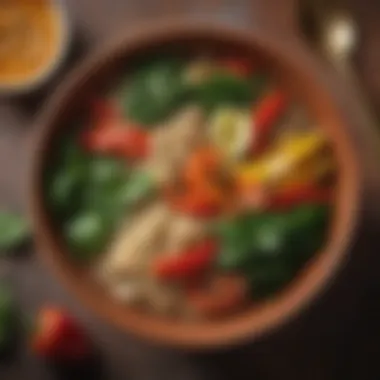
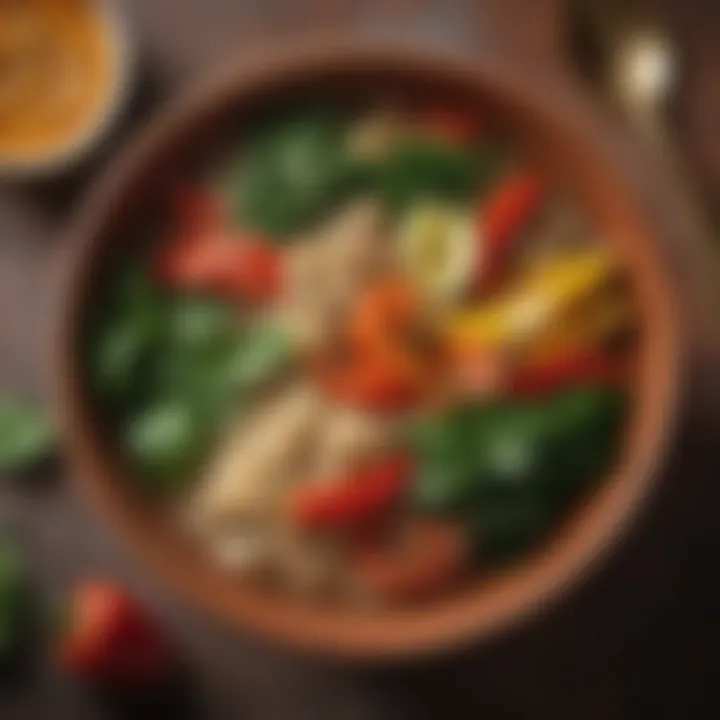
Whole grains play a significant role in a high iron vegetarian diet. Foods like quinoa, brown rice, and sprouted bread can enhance iron intake while providing additional fiber and vitamins. Quinoa, for example, is a complete protein, which also contains about 2.8 mg of iron per cup of cooked grain.
It is advisable to choose whole grains over refined counterparts when aiming for higher iron consumption. Whole grains retain their bran and germ, where many nutrients, including iron, are concentrated. A balanced diet including these grains can lead to improved nutritional outcomes.
Dark Leafy Greens
Dark leafy greens are often recommended as part of a nutritious vegetarian diet. Foods like spinach, kale, and swiss chard are rich in iron. Spinach, in particular, contains about 6.4 mg of iron per cooked cup. While they are high in iron, the bioavailability of iron from these sources can be lower than that from animal sources.
Cooking these greens can help reduce oxalates, which inhibit iron absorption. Including a variety of greens in meals not only boosts iron levels but also adds a spectrum of vitamins and antioxidants beneficial for overall health.
Fortified Foods
Fortified foods offer an easy way to increase iron intake. Many cereals, plant-based milks, and nutritional yeast are fortified with iron. For instance, breakfast cereals can contain significant iron levels, often more than 50% of the daily value in a single serving.
Choosing fortified options can be especially helpful for individuals who find it challenging to meet their iron needs through whole foods alone. Reading labels is important to ensure the levels of iron align with dietary requirements. While these foods can be beneficial, they should complement whole food sources rather than replace them entirely.
Enhancing Iron Absorption
Enhancing iron absorption is a crucial aspect in the context of vegetarian meals, particularly for individuals relying on plant-based sources for their iron needs. Vegetarian diets often contain non-heme iron, which is less readily absorbed by the body compared to heme iron found in animal products. Therefore, understanding and implementing methods to boost absorption becomes essential for maintaining optimal iron levels.
The Importance of Vitamin
Vitamin C plays a pivotal role in the process of iron absorption. It is known to convert non-heme iron into a form that is more absorbable by the body. This function is significant, especially for vegetarians who mainly consume non-heme iron from foods like legumes, nuts, and leafy greens. Incorporating foods high in vitamin C, such as citrus fruits, bell peppers, and strawberries, alongside iron-rich meals can enhance the overall nutritional value.
Research indicates that consuming vitamin C in tandem with non-heme iron can significantly increase absorption rates. Thus, being mindful of combining these elements is an effective strategy to ensure adequate iron intake.
Avoiding Inhibitors of Iron Absorption
Several compounds can inhibit the absorption of iron in the diet. Identifying and managing these inhibitors can help optimize iron levels in vegetarian meals.
Tannins
Tannins are polyphenolic compounds commonly found in tea, coffee, and some red wines. They can bind to iron, forming insoluble complexes that the body cannot absorb efficiently. While the consumption of tannin-rich beverages, especially during meals, can hinder iron absorption, they also offer antioxidant benefits. For those focusing on their iron levels, it is advisable to limit intake of these beverages at meal times. They present a dual characteristic; while they are beneficial in preventing oxidative stress, their impact on iron absorption is a consideration that cannot be overlooked.
Calcium
Calcium is another well-known inhibitor of iron absorption. Found in dairy products and some greens, calcium competes with iron for absorption in the intestines. This competition can be problematic for vegetarians who may rely on dairy for calcium needs.
Although calcium is vital for bone health and has significant dietary benefits, its presence can reduce the effectiveness of non-heme iron absorption when consumed together. To maximize iron intake, it may be beneficial to separate calcium-rich foods from iron-rich meals.
Moreover, considering alternative sources of calcium, such as fortified plant milks or leafy greens that are lower in calcium, may help to balance these dietary needs.
Pairing Foods Strategically
Strategic food pairings can greatly influence iron absorption. By combining iron-rich foods with those that enhance or do not hinder absorption, individuals can create meals that are not only nutritious but also effective at meeting iron requirements. This involves an understanding of both absorption enhancers, like vitamin C, and inhibitors, like tannins and calcium.
Key strategies include:
- Combining legumes with citrus: A lentil salad with bright lemon dressing can amplify iron uptake.
- Serving leafy greens with strawberries: A spinach and strawberry salad can provide abundant iron and vitamin C.
- Timing of consumption: Planning meals so that iron-rich foods are consumed separately from high tannin and calcium foods ensures maximum absorption.
Properly timing these meals encourages better iron status in vegetarian diets, contributing to overall wellbeing.
Practical Meal Ideas
Introducing practical meal ideas into a vegetarian diet is essential for ensuring adequate iron intake. These meals not only enhance iron levels but also provide a balanced nutrition profile. By focusing on high-iron ingredients, individuals can create diverse and satisfying meals that fit their lifestyle. The combination of quick preparation times and nutrient-density makes these options appealing for anyone looking to optimize their diet.
Easy Breakfast Options

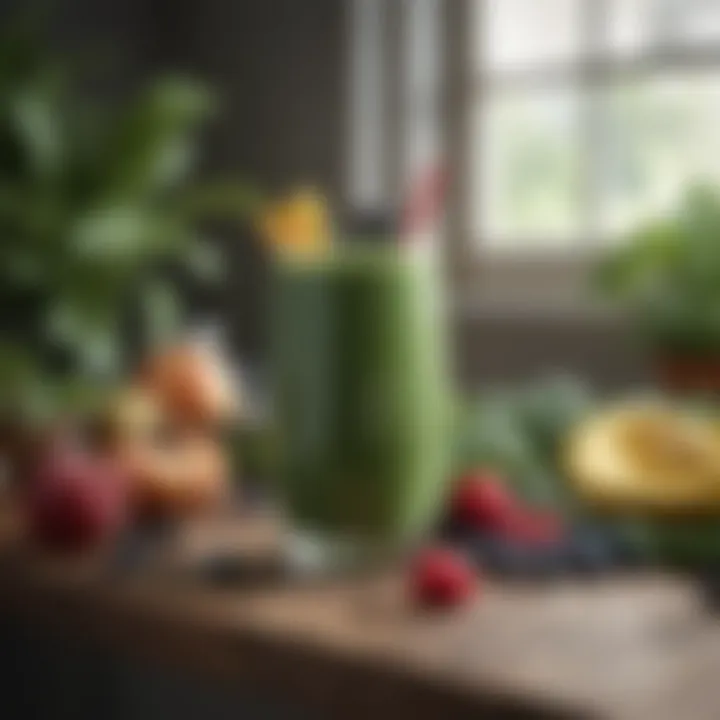
Chickpea Scramble
Chickpea scramble serves as a wonderful breakfast choice as it provides a substantial amount of iron while being simple to prepare. Using mashed chickpeas as a base, combined with spices and vegetables, creates a dish that mimics traditional scrambled eggs. It is a popular choice in vegetarian cooking due to its protein content and versatility. The unique feature of chickpea scramble lies in its high fiber content, which can aid in digestion. However, some may find its texture different from a traditional scramble, which could be a disadvantage for those transitioning to plant-based diets.
Spinach and Quinoa Bowl
The spinach and quinoa bowl is another iron-rich breakfast option. Combining cooked quinoa with fresh spinach offers a good balance of iron and vitamins. It highlights the importance of whole grains paired with dark leafy greens, which enhance nutritional benefits. This bowl is beneficial as it can be topped with seeds or nuts, further increasing the iron content. However, preparation may take more time than other quick breakfasts, which is a consideration for busy individuals.
Nutrient-Dense Lunch Recipes
Lentil Salad with Citrus Dressing
A lentil salad with citrus dressing presents a refreshing and nutritious lunch idea. Lentils are recognized for their high iron levels and paired with a zesty dressing, they provide a flavorful experience. The key characteristic of this salad is its combination of protein and fiber, which supports sustained energy levels throughout the day. The unique feature of this dish is its adaptability; it can easily include various vegetables or grains. This flexibility is an advantage, allowing for customization based on personal preferences.
Black Bean and Kale Wrap
For those seeking a convenient lunch, the black bean and kale wrap fits the bill. It is rich in iron, thanks to the black beans, and offers a satisfying texture with the addition of kale. This option is particularly advantageous because it is portable and can be made in advance. The main disadvantage might be that the flavors need to meld, so it’s best eaten fresh or after marinating for a bit.
Simple Dinner Ideas
Chickpea and Sweet Potato Curry
The chickpea and sweet potato curry is a hearty dinner option. This dish combines the robust flavor of chickpeas with the natural sweetness of sweet potatoes, making it a fulfilling meal. Its key characteristic is the incorporation of spices that enhance the dish’s appeal while providing added health benefits. A unique feature is its one-pot nature, which simplifies cooking and cleaning. However, the cooking time can be a bit longer, which may not suit every schedule.
Stuffed Bell Peppers with Brown Rice
Stuffed bell peppers with brown rice offer a colorful and nutritious dinner alternative. This meal is visually appealing and includes iron-rich ingredients. The main advantage of this dish is its presentation and the ability to adjust fillings according to what is on hand. However, it does require some preparation, which might deter individuals looking for quick fixes.
Snacks and Sides
Roasted Pumpkin Seeds
Roasted pumpkin seeds are an excellent snack option, providing a crunchy and satisfying texture. They are high in iron and other minerals, making them a healthful choice. Their key characteristic is their ease of preparation; simply toss in spices and roast. This snack has the advantage of being portable, ideal for on-the-go eating. A small disadvantage could be their high calorie content, requiring moderation.
Hummus with Bell Pepper Sticks
Hummus with bell pepper sticks is a nutritious and appealing snack choice. The creamy texture of the hummus, combined with the crispness of bell peppers, makes for a delightful combination. This snack is beneficial as it is not only high in iron but also provides healthy fats and fiber. The unique feature is its versatility; it can be spiced up in various ways or served with other vegetables. However, those with legume allergies may find it unsuitable.
Meal Planning for Busy Individuals
Meal planning is crucial for individuals who want to maintain a high iron vegetarian diet while balancing the demands of a busy lifestyle. By implementing effective meal planning strategies, you can ensure that you consistently meet your nutritional needs without requiring excessive time or effort. This section outlines several practical approaches to meal planning that enhance convenience, promote food quality, and ultimately support overall health.
Batch Cooking Strategies
Batch cooking serves as an efficient way to prepare meals in advance, allowing you to manage your time effectively. The idea is simple: dedicate a time, usually once a week, to cook large quantities of food.
- Begin by selecting high iron recipes, such as lentil soups, chickpea stews, or quinoa-based dishes.
- Cook these meals in bulk and store them in portion-sized containers. This not only saves time during your busy week, it also helps in maintaining the necessary iron intake.
- Focus on versatile ingredients that can be used across different recipes. For instance, cooked lentils can easily be mixed with various vegetables for different meals.
Using batch cooking can reduce the temptation to opt for less nutritious options when you're short on time. It promotes a balanced diet and minimizes food waste, as you'll use what you prepare.
Storing and Reheating Meals
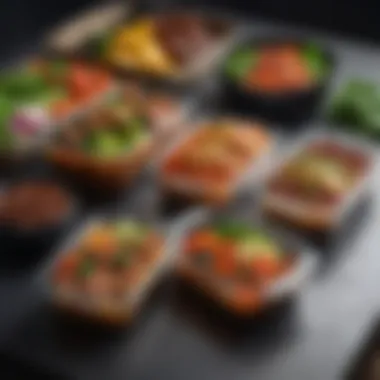
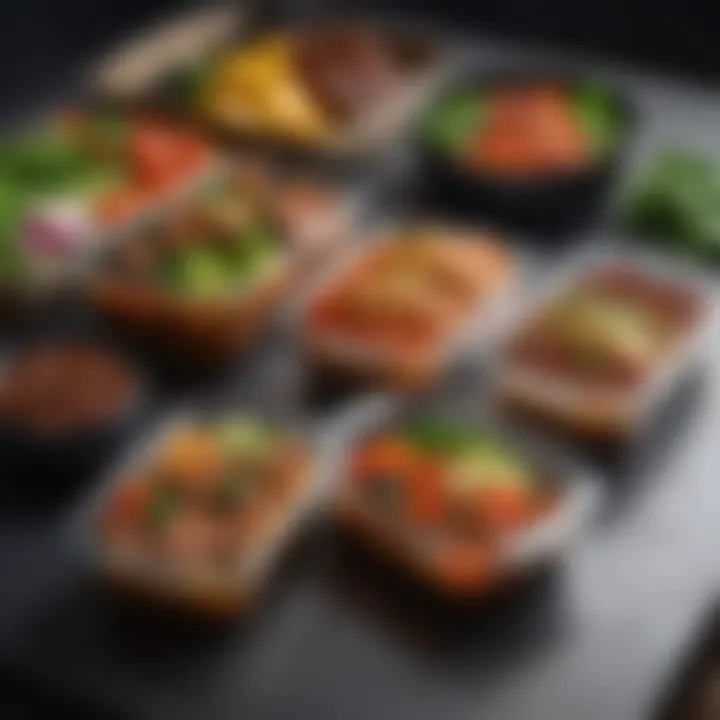
Once you have prepared your meals, proper storage and reheating are vital for retaining nutritional value and ensuring food safety.
- Storage: Always allow cooked food to cool to room temperature before refrigerating it in airtight containers. Use clear labels with dates to track freshness.
- Freezing: For longer storage, consider freezing meals. This method retains nutrients and flavor, making it ideal for iron-rich dishes. Ensure you defrost meals in the refrigerator or microwave for best results.
- Reheating: When reheating, ensure that your meals reach an internal temperature of 165°F (74°C). Use the microwave, stove, or oven as preferred. Adding a touch of fresh ingredients, like herbs or vegetables, during reheating can elevate the meal's flavor.
Utilizing Leftovers Effectively
Leftovers can be a valuable part of your meal planning strategy. Optimizing their use can lead to varied diets and reduce food waste.
- Transform leftovers into new meals. For example, leftover quinoa can be turned into a salad or added to a vegetable stir-fry.
- Incorporate different spices or dressings to create unique flavors, preventing meal fatigue.
- Keep a “leftovers night” once a week where you serve a mix of all leftover dishes. This encourages creativity and minimizes spoilage.
Utilizing leftovers not only saves time but also contributes to a more sustainable eating practice. It’s a practical solution for busy vegetarians striving to meet their iron needs.
"Proper meal planning can transform a chaotic week into a more organized and nourishing experience. By taking these steps, you can ensure that convenience does not compromise your nutritional goals."
Incorporating these meal planning strategies into your routine will allow you to enjoy high iron vegetarian meals without feeling overwhelmed. You can approach each week with confidence, knowing that your meals align with your nutritional aspirations.
Addressing Common Challenges
Including high iron vegetarian meals in one’s diet comes with unique challenges. Understanding these challenges is essential for those aiming to optimize their nutrition. The importance of this topic lies in providing insight into potential obstacles and solutions that enhance the vegetarian iron experience. Gathering knowledge about these aspects helps individuals to make informed decisions regarding their meals. It is crucial to recognize that with the right strategies, one can successfully navigate the hurdles related to iron deficiency and personalized dietary needs.
Overcoming Iron Deficiency
Iron deficiency can significantly impact one's health, leading to symptoms such as fatigue, weakness, and impaired cognitive function. For vegetarians, the risk of deficiency is heightened due to the reduced intake of heme iron, primarily found in animal products. Therefore, it becomes vital to monitor iron intake and recognize common signs of deficiency.
To effectively overcome iron deficiency, consider these strategies:
- Regular Blood Tests: Monitoring iron levels through blood tests assists in early detection of anemia or iron deficiency.
- Incorporation of Iron-Rich Foods: Focus on dietary staples such as lentils, chickpeas, tofu, and spinach. Each of these foods provides a substantial amount of non-heme iron.
- Supplementation: In cases of severe deficiency, consult with a healthcare provider about iron supplements. It is important to get guidance on appropriate dosages and types.
- Cook with Cast Iron: Utilize cast iron cookware as it can positively influence the iron content of meals.
"Awareness of one’s iron levels is crucial in maintaining overall wellbeing, especially for vegetarians."
Adapting Recipes for Individual Needs
Individual dietary needs can vary greatly. Therefore, adjusting recipes to accommodate personal preferences or nutritional requirements is essential for sustained interest and compliance in a vegetarian diet. Adapting recipes can be beneficial for those who may have additional dietary restrictions, such as allergies or intolerances.
Here are some considerations when modifying vegetarian recipes:
- Substituting Ingredients: If certain foods do not align with personal tastes or dietary restrictions, seek substitutions that still offer high iron content. For example, replace nuts with seeds in recipes for those with nut allergies.
- Flavor Enhancements: To encourage consumption, experiment with spices and herbs that enhance taste without overshadowing the nutritional aspect.
- Portion Sizes: Adjust portion sizes based on activity levels and individual metabolic rates. It is crucial to find a balance that suits personal energy needs.
- Cultural Adaptations: Incorporate traditional recipes that integrate local ingredients rich in iron, catering to cultural preferences while maintaining nutritional integrity.
By addressing these common challenges, vegetarians can enhance their diets and maintain optimal health. Identifying barriers and implementing comprehensive strategies can make a significant difference in achieving dietary goals.
Closures and Recommendations
Understanding the significance of iron-rich foods within a vegetarian diet enhances one's overall wellbeing. The article highlights how a well-planned vegetarian diet can meet iron needs through thoughtful choices and pairing strategies that optimize absorption.
Summary of Key Points
- Iron is essential for various bodily functions, including oxygen transport, immune function, and overall cellular activity.
- Vegetarian diets can provide sufficient iron when foods are selected carefully, focusing on legumes, nuts, seeds, dark leafy greens, and fortified options.
- Vitamin C plays a critical role in enhancing iron absorption, should be included in meals to maximize iron intake.
- Meal planning strategies such as batch cooking, smart storage, and effective use of leftovers can greatly assist in maintaining an iron-rich diet amid a busy lifestyle.
- Addressing challenges like iron deficiency requires awareness and adaptation of recipes, ensuring that individual nutritional needs are met.
Encouragement for Continued Exploration
Exploring the vast array of vegetarian meals high in iron should not stop here. There are unique flavors and dishes waiting to be discovered. One can experiment with different cuisines, such as Indian or Mediterranean, where beans, lentils, and chickpeas are staples.
Dishes like dal, hummus, and tabbouleh can serve as excellent bases, enriched with various seasonings and herbs to enhance both taste and nutritional value. Seeking out local markets can also lead to discovering seasonal produce, adding freshness to meals and potentially increasing iron intake.
"An informed eater is an empowered eater."
Embrace the journey of culinary creativity while maintaining a keen eye on nutrition.







